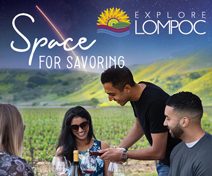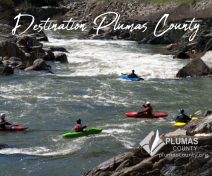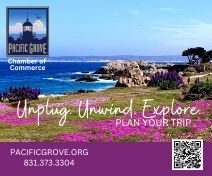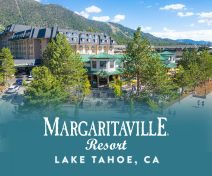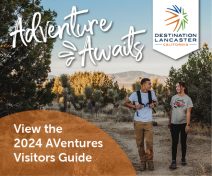ROad Trips

Highways to Paradise
California's thrilling drives and iconic highways await!
By John Flinn
HIGHWAY 1
Whether you drive ten miles or the full thousand, Highway 1 will provide twists and turns and views of the coast that will take your breath away, such as this one in Santa Cruz County.
California is a land of supersized distances, jumbo landscapes and big-gulp vistas, and the best way to see it all is on a road trip, or, better yet, a series of road trips. Here are a few favorites.
Up the Coast
Northern Californians call it “Highway 1” and Southern Californians call it the “Pacific Coast Highway,” but there’s no doubt that the road that hugs the state’s remarkable coastline, often close enough to feel the salt spray, offers one of the world’s classic driving trips.
From sun-splashed Southern California beaches to the misty redwood forests near the Oregon border, the journey, which includes a few stretches on other highways, it is a touch over 1,000 miles. The sights are so numerous one can barely scratch the surface.
A few tips: Allow more time than you think you need. Besides the frequent diversions, the road is so winding in places it’s hard to average more than 30 miles per hour. If you’re prone to carsickness, this isn’t the trip for you. Keep your gas tank full, and your bladder empty.
The Wild West
Highway 395 is one of California’s most iconic drives. Hugging the state’s eastern border, and the 264-mile stretch of high desert from Reno to Lone Pine, the road passes tumbleweeds, swinging-door saloons and ghost towns beneath the breathtakingly sheer eastern wall of the Sierra Nevada.
The northern stretch traverses ranchland that was once, and sometimes still is, the domain of Basque sheepherders. As you drive south, keep an eye out for cowboys, although these days they’re as likely to be riding an all-terrain vehicle as a horse. Farther south, as you approach Mono Lake, you’ll probably encounter members of the Washoe and Paiute tribes.
Highway 395 grazes the shore of enormous Mono Lake, which is so alkaline Mark Twain once joked he could do his laundry merely by dragging it behind him in a boat. Stop at Manzanar, just off the highway, for a poignant visit to the site of a relocation camp for Americans of Japanese heritage during World War II. In Lone Pine, the Museum of Western Film History pays tribute to the hundreds of Hollywood Westerns, starring everyone from Hopalong Cassidy to John Wayne, filmed in the nearby Alabama Hills.
Day Trips
You don’t have to spend days or weeks on the highway to see the best of California. Within easy reach of major cities are exquisite road trips you can do in less than a day.
San Francisco
Head north, across the Golden Gate Bridge, to sample some of Northern California’s most bucolic scenery. Fortunately, most of it was spared by the devastating fires of recent years. Almost within sight of San Francisco’s skyscrapers you’ll come to Muir Woods National Monument, a cathedral-like preserve of old-growth redwoods at the foot of Mount Tamalpais. Follow Highway 1 to Point Reyes National Seashore, where you might catch tule elk grazing on misty hillsides above the wave-battered coast. West Marin County, with its organic farms, artisanal bakeries and gourmet cheesemakers, is the breadbasket for San Francisco’s foodie culture.
Los Angeles
On a day trip along the Angeles Crest Scenic Byway you’re more likely to spot a bighorn sheep than a Kardashian. As you wind up and over narrow ridgetops in the San Gabriel Mountains, above the smog, your vistas range from the vast, chocolate-brown Mojave Desert to Catalina Island. Also known as State Highway 2, the 66-mile-long Angeles Crest Scenic Byway was built almost 100 years ago to be “the most scenic and picturesque mountain road in the state.” Access it from the suburb of La Cañada Flintridge at the western end of the San Gabriel Valley. As you drive east on the narrow two-lane road, keep an eye out for bears, mountain lions and bighorn sheep. Another side trip brings you to the Mount Wilson Observatory, where astronomers found the first observational evidence supporting the Big Bang theory.
San Diego
Cross the Palomar Mountains to soak up the vast and colorful Anza-Borrego desert on a daylong drive from San Diego. Make your way north on I-15 and east to Ramona, and then continue on to the ridgetop town of Julian. A beautifully preserved relic of an 1870s gold rush, Julian these days is renowned for apples. You’ll smell the aroma of baking pies the moment you step out of your car. The air here is so clean, and the views so extensive, that the California Institute of Technology built the Palomar Observatory a few miles away. Continue east, downhill, on Highway 78 to Anza-Borrego Desert State Park. If it’s spring, and the winter has been wet, you’ll be treated to one of the most vivid and sweeping displays of wildflowers in the United States.
A local landowner commissioned artist Ricardo Arroyo Breceda to produce more than 130 giant sculptures in the desert, everything from life-sized replicas of gomphotheres (elephant-like creatures that once lived there) to prehistoric camels and ground sloths. The undisputed highlight is an enormous sea serpent that undulates so far across the desert that it spans one of the main roads.
Pick Your Highway
CA-1 The Coast pacific-coast-highway-travel.com
US-395 Eastern Sierra visitcalifornia.com/experience/highway-120




